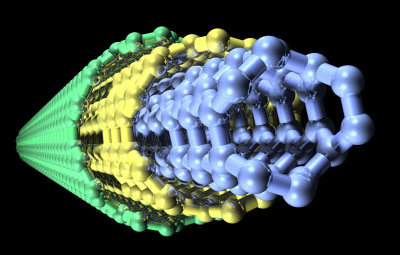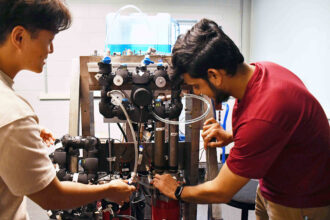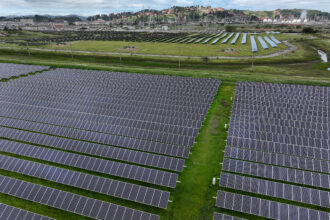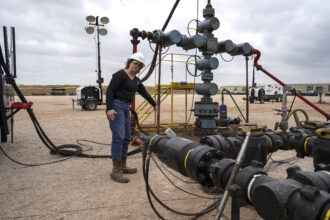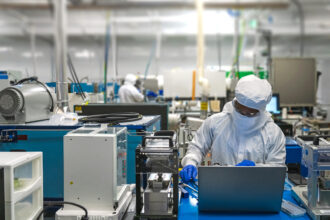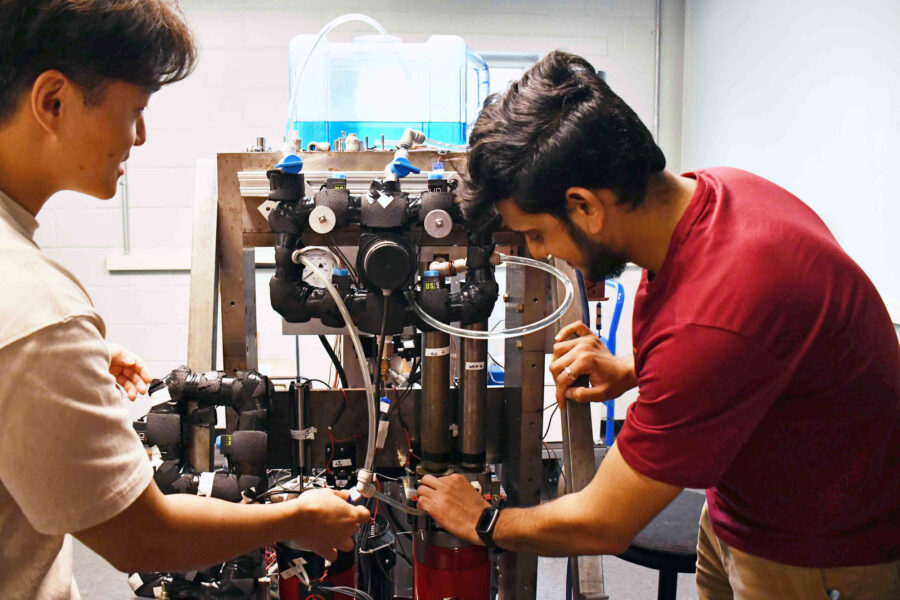Climate laws alone cannot shift the global energy paradigm to clean, renewable sources by 2050, but with the help of nanoscience they just might.
U.S. scientists are on the leading edge of nanoscience work that has the potential to facilitate a quantum leap in technology innovation.
This relatively new area of scientific work involves control of materials at the atomic, or molecular, level causing it to undergo a quantum change that makes it lighter and better by increasing the surface size and strength of products, explains Wade Adams, director of the Richard B. Smalley Institute for Nanoscale Science and Technology at Rice University.
Nanoclay, for example, has been used for a decade to make light, flexible car bumpers and side panels. Scientists studied the nanostructure of lotus leaves to create water repellant surfaces used on clothing to repel moisture and stains.
Nate Lewis, professor of chemistry at California Institute of Technology, believes nanoscience is also key to making clean energy affordable by providing inexpensive replacements for expensive components in clean energy technologies.
He is on the verge of a breakthrough in solar energy technology with the creation of a revolutionary nanomaterial to replace silicon, the most expensive component in solar panels. The material will be used to develop solar energy products that can be rolled out like bubble wrap or painted on buildings, roads and other flat surfaces. The idea, says Lewis, is to make solar technology so inexpensive that even people living in undeveloped nations can afford it.
Hydrogen fuel cells are already in use in hydrogen cars, but aren’t being massed produced because platinum, a precious metal required in the electrolyte process, makes fuel cells expensive to manufacture. Japan’s Daihatsu Motor Co. Ltd. recently announced the development of a fuel cell that uses alkali, rather than acid, in the ion exchange membranes, allowing fuels cells to work with inexpensive materials like cobalt, instead.
Adams is working on superconductive carbon nanotube wire, which could transmit electricity with little or no resistance. This breakthrough in energy infrastructure may make it possible to build a global grid that immediately delivers inexpensive, clean, renewable energy anywhere in the world it’s needed.
“If you have grid-wire capable of ‘slothing’ energy around the world along 12 time zones, you don’t have to store it,” Adams says, pointing out that the sun is always shining, wind is always blowing, somewhere in the world. Currently, 8 percent of energy is lost for every 200-mile stretch it travels, or 40 percent in 1,000 miles.
Nanoscience is the game changer because it will make it possible to create, store or immediately deliver clean, inexpensive, renewable energy anywhere in the world, says Garry Golden, futurist consultant and editor of The Energy Roadmap.
“If energy can be stored on wind farms or locally in buildings and homes, it will be possible for these resources to grow,” he says, noting that utilities are resistant to expanding renewables due to their intermittent nature.
He suggests that eventually utilities might become obsolete, or at least less important to daily life. With energy stored at the nanoscale, enough electricity to power a home for a month could be stored in a block the size of a bar of soap.
“Within five to 10 years, we might be buying a packet of energy at the grocery store to feed into a home energy appliance—a fuel cell or flywheel about the size of a refrigerator—manufactured by someone like GE, Siemens or Chevron,” Golden says, noting blocks of energy could also power cars.
“Enabled by nanotechnology, electric cars will happen faster than we ever thought possible,” Adams says, explaining that nanoscience is increasing the charge life of batteries, which improves travel distance for electric cars between charges. He notes that a lithium-ion battery patented by A123 Systems uses a nanophosphate cathode chemistry material instead of cobalt oxide, which will provide the Chevy Volt a 200-mile driving range.

This next generation of electric cars look like conventional autos and go just as fast, and Adams believes they will become popular with the public once manufacturers begin racing them at NASCAR and people can see how good they look and how well they perform.
Golden notes that the new V2G (vehicle to grid) battery, developed at the University of Delaware, is powered by the combination of a fuel cell and capacitor. It charges when demand is low and adds power back to the grid during peak-demand periods when it’s needed most.
While one car’s impact on the grid is miniscule, the aggregate effect of hundreds of cars would be significant, points out Scott Baker, a University of Delaware graduate student who worked on the V2G project team. The 30-KWh battery runs off the grid’s regulation signal and could power the average home for at least 20 hours and/or take stress off the grid during times of peak usage.
Hydrogen fuel cell, or “micro-fuel cell,” batteries created at nanoscale, however, could provide an unlimited driving range, Golden adds, noting that the surface of a nanoscale fuel cell is the size of a football field. Once charged, it would self-charge as long as the car is running and put energy back on the grid.
Ultimately, Adams views climate change as an opportunity to change energy and solve all the world’s problems at once. He points out that access to cheap, clean, renewable energy could bring economic prosperity to poor, undeveloped nations. “You can’t produce food, solve water and health problems or win the war on terror if two-thirds of people on the earth are disenfranchised,” Adams says.
See also:
Smart Grid: Digging The Foundations
New Technologies Zero in on Wasted Energy
RE-ENERGYSE a New Generation of Clean Energy Innovators
About This Story
Perhaps you noticed: This story, like all the news we publish, is free to read. That’s because Inside Climate News is a 501c3 nonprofit organization. We do not charge a subscription fee, lock our news behind a paywall, or clutter our website with ads. We make our news on climate and the environment freely available to you and anyone who wants it.
That’s not all. We also share our news for free with scores of other media organizations around the country. Many of them can’t afford to do environmental journalism of their own. We’ve built bureaus from coast to coast to report local stories, collaborate with local newsrooms and co-publish articles so that this vital work is shared as widely as possible.
Two of us launched ICN in 2007. Six years later we earned a Pulitzer Prize for National Reporting, and now we run the oldest and largest dedicated climate newsroom in the nation. We tell the story in all its complexity. We hold polluters accountable. We expose environmental injustice. We debunk misinformation. We scrutinize solutions and inspire action.
Donations from readers like you fund every aspect of what we do. If you don’t already, will you support our ongoing work, our reporting on the biggest crisis facing our planet, and help us reach even more readers in more places?
Please take a moment to make a tax-deductible donation. Every one of them makes a difference.
Thank you,
